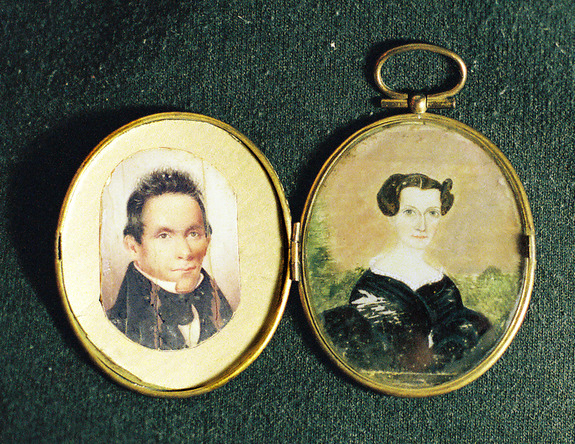Alabama’s Anti-Miscegenation StatutesPosted in Articles, History, Law, Media Archive, United States on 2016-07-27 02:09Z by Steven |
Alabama’s Anti-Miscegenation Statutes
Alabama Review
Volume 68, Number 4, October 2015
pages 345-365
DOI: 10.1353/ala.2015.0033
Jeremy W. Richter, Associate
Webster, Henry, Lyons, Bradwell, Cohan & Speagle, P.C., Attorneys and Counselors at Law, Birmingham, Alabama
In the immediate aftermath of the civil war and, more specifically, the ratification of the Fourteenth Amendment, various southern states began passing laws to preserve a now-fragile social structure. Beginning with President Lincoln’s Emancipation Proclamation of January 1, 1863, which liberated all slaves residing in rebel states or territories, the southern states’ social ecology had begun to unravel, and southern whites faced a situation in which the black Americans once deemed property were now citizens—equal in the eyes of the law.
Nevertheless, white citizens sought to maintain control over their black counterparts. In an effort to preserve their society, southern states in 1865 began to pass a series of laws, which varied by state and collectively became known as Black Codes. These laws were designed to exploit and control former slaves. For example, freedmen (as freed black citizens became known) who were arrested for vagrancy could be contracted out for labor; freedmen were, in some states, not allowed to raise their own crops and were precluded from entering towns without permission. Most significantly perhaps, the Black Codes enacted offenses containing differing penalties for black versus white citizens. These racially-discriminatory penalties were later outlawed upon the ratification of the Fourteenth Amendment and the enactment of the Reconstruction Acts.
Two centuries of slavery had, prior to 1865, created a caste system which maintained, at least officially, the distinction between white and black. With that barrier removed and the federal government attempting to institute legal racial equality, of primary concern to many was the preservation of the purity of the white race. In response, many states throughout the United States, largely regardless of geography, passed laws prohibiting the intermarriage of white and black citizens. In 1967, the Supreme Court of the United States held in Loving v. Virginia that laws prohibiting interracial marriage were unconstitutional, and as such any such existing laws were overturned. At the time of the Loving v. Virginia decision, sixteen states still had anti-miscegenation laws in effect: Delaware, Virginia, Georgia, South Carolina, North Carolina, Kentucky, Tennessee, Louisiana, Mississippi, Alabama, Missouri, Arkansas, Texas, Florida, West Virginia, and Oklahoma.
The State of Alabama enacted its first anti-miscegenation law in the Penal Code of 1866:
If any white person and any negro, or the descendant of any negro, to the third generation inclusive, though one ancestor of each generation was a white person, intermarry, or live in adultery or fornication with each other, each of them must, on conviction, be imprisoned in the penitentiary, or sentenced to hard labor for the county, for not less than two, nor more than seven years.
The Alabama legislature reinforced this statute in new penal codes that were enacted in 1867 (§ 3602), 1876 (§ 4189), 1886 (§ 4018), and 1896 (§ 5096). In 1901, Alabama drafted a new state constitution, wherein the anti-miscegenation statute was made a part of the state constitution: “The legislature shall never pass any law to authorize or legalize any marriage between any white person and a negro, or descendant of a negro.” The final revisions to Alabama’s anti-miscegenation law were adopted in the Code of Alabama of 1940, which stated: “If any white person and any negro, or the descendant of any negro intermarry, or live in adultery or fornication with each other, each of them shall, on conviction, be imprisoned in the penitentiary for not less than two nor more than seven years.”
Judicial Application of Anti-Miscegenation Laws in Alabama: Setting Precedent, 1868–1881
In addition to a law disallowing marriage between whites and blacks, the Alabama Penal Code of 1866 adopted laws governing adultery. Where Alabama Code § 3598 outlined the repercussions of adultery offenses generally, Alabama Code § 3602 specifically addressed the penalties for adultery between white and black persons:
If any white person or negro, or the descendant of any negro, to the third generation inclusive, though one ancestor of each generation was a white person, intermarry or live in adultery with each other, each of them must, on conviction, be imprisoned in the penitentiary, or sentenced to hard labor for the…

